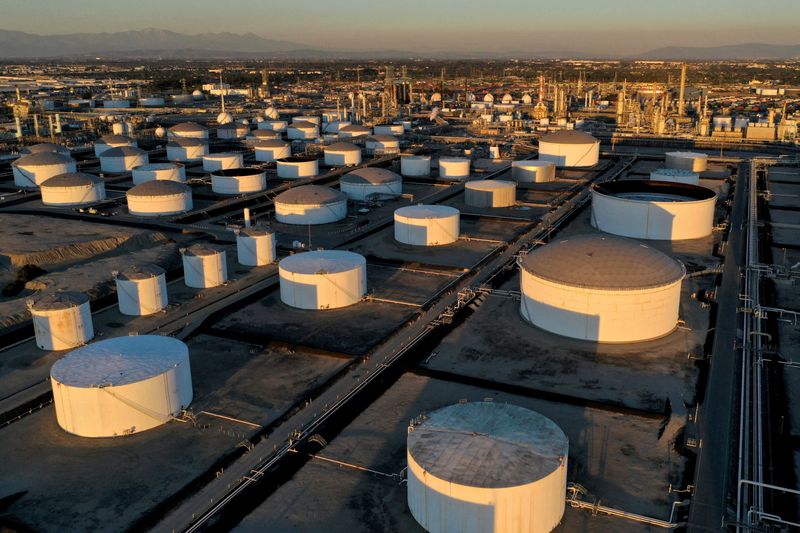Commodities
Oil slips as strong supply counters Middle East and hurricane risk

By Arunima Kumar
LONDON (Reuters) -Oil prices erased early gains on Wednesday as weak demand fundamentals and rising supply countered elevated risk of supply disruption from conflict in the Middle East and Hurricane Milton in the United States.
futures were down 36 cents, or 0.47%, at $76.82 a barrel by 1103 GMT while U.S. West Texas Intermediate (WTI) futures lost 43 cents, or 0.58%, to $73.14.
Brent and WTI both gained more than 1% earlier in the session after prices had plunged on Tuesday by more than 4% on a possible Hezbollah-Israel ceasefire, though markets remain wary of a potential Israeli attack on Iranian oil infrastructure.
“Despite the current heightened tensions in the Middle East, it is easy to forget that the oil market is very much vulnerable to corrections due to the ongoing bearish macro narrative centred on China,” said Harry Tchilinguirian, head of research at Onyx Capital Group.
China said on Tuesday it was “fully confident” of achieving its full-year growth target but refrained from introducing stronger fiscal steps, disappointing investors who had banked on more support for the economy.
Investors have been concerned about slow growth dampening fuel demand in China, the world’s largest crude importer.
Weak demand continues to underpin the fundamental outlook. The U.S. Energy Information Administration’s (EIA) on Tuesday downgraded its demand forecast for 2025 on weakening economic activity in China and North America.
oil stocks rose by nearly 11 million barrels last week, much more than analysts polled by Reuters had expected, according to market sources citing American Petroleum Institute figures on Tuesday.
“Such a backdrop belies the war premium in oil prices at present, but it would be a brave soul indeed to dismiss what will happen to oil prices if Israel does the unthinkable and targets Iran’s oil sector,” said John Evans at oil broker PVM.
Investors are awaiting developments from expected talks between U.S. President Joe Biden and Israeli Prime Minister Benjamin Netanyahu over intensifying conflict in the Middle East.
The oil-producing region has been on high alert for any Israeli response to an Iranian missile attack last week in retaliation for Israel’s military escalation in Lebanon.

Tehran told Gulf Arab states it would be “unacceptable” if they allowed use of their airspace or military bases against Iran and warned that any such move would draw a response, a senior Iranian official said.
The official added that there had been no discussion as yet on any potential action by Gulf states to balance oil markets if Iranian energy facilities are attacked by Israel.
Commodities
Oil prices rise; U.S. crude inventories plunge, Russia-Ukraine truce eyed
Commodities
India’s Reliance to stop buying Venezuelan oil over US tariffs, sources say
Commodities
Oil prices climb on Venezuela supply worries

 Forex3 years ago
Forex3 years agoForex Today: the dollar is gaining strength amid gloomy sentiment at the start of the Fed’s week

 Forex3 years ago
Forex3 years agoUnbiased review of Pocket Option broker

 Forex3 years ago
Forex3 years agoDollar to pound sterling exchange rate today: Pound plummeted to its lowest since 1985

 Forex3 years ago
Forex3 years agoHow is the Australian dollar doing today?

 Cryptocurrency3 years ago
Cryptocurrency3 years agoWhat happened in the crypto market – current events today

 World3 years ago
World3 years agoWhy are modern video games an art form?

 Commodities3 years ago
Commodities3 years agoCopper continues to fall in price on expectations of lower demand in China

 Economy3 years ago
Economy3 years agoCrude oil tankers double in price due to EU anti-Russian sanctions























